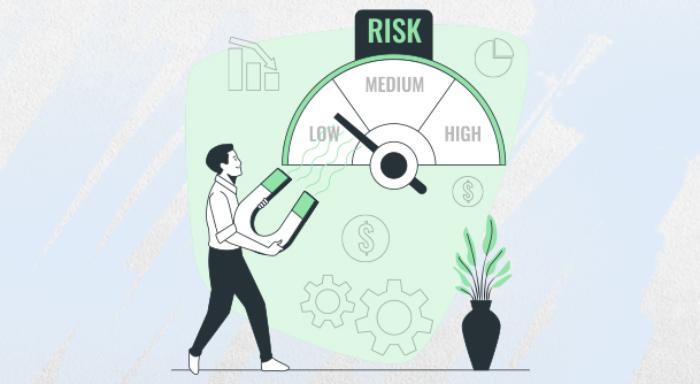Tips & Strategies for Portfolio Management in ULIPs
Blog Title
381 |
4/22/25 9:37 AM |
Unit-Linked Insurance Plans (ULIPs) are unique life insurance products that offer the protection of life cover alongside the opportunity to grow your savings. In a ULIP, premiums are not just paying for your life cover but are also being invested into market-linked funds that appreciate in value. This benefit makes ULIPs the ideal product for someone who wants to focus on wealth growth while still securing their dependents.
However, since ULIP returns are market-linked, this means that they are not guaranteed and are subject to market risks. The turbulence of the market can devalue your funds, and this can be especially problematic if you have invested all your money into just one fund. Hence, portfolio management is essential if you want to assure the growth of your funds and mitigate risk. This is a basic guide that will help you understand the features of ULIPs and the best ways to manage your fund portfolio.
First Let’s Go Through the Types of ULIP Funds
To learn the best ways to manage your fund portfolio, you should first know the types of funds accessible to you. Most ULIPs offer a range of diverse funds that you can freely choose from. These funds can be broadly categorized into three types:
Equity Funds: Funds that are directly tied to the share market are known as equity funds. These funds have the highest growth potential but are also the riskiest due to the volatile nature of the share market.
Debt Funds: Funds that are tied to debt securities such as government bonds, corporate bonds etc. are known as debt funds. These funds are generally low risk alternatives that are suitable for risk averse investors. However, debt funds usually offer lower returns when compared to equity funds.
Balanced Funds: Funds that are a mix of equity and debt securities are known as balanced funds. These funds mitigate risk with debt bonds while providing decent returns with equity investments.
Look for Plan with Unlimited Switches
Most ULIPs allow you to switch between the offered funds to min-max your returns. To get the best results, you should look for ULIPs that offer unlimited fund switches. Unlimited fund switches allow you to manage and adjust your ULIP portfolio without having to worry about additional charges. This benefit is especially important if you like to micromanage your funds. Pivoting from one fund to another is a crucial part of portfolio management, so take full advantage of this benefit to maximize your growth!
Choose a Portfolio Strategy
Your ULIP funds should help you achieve your primary life goals. This is why you must have a fund strategy from day one. For example, if your primary goal is to save for your child’s education, you need to invest in low-risk funds that assure returns after a few years. Hence, you will need to focus on debt or balanced funds while keeping equity funds as your backup.
On the other hand, if your goal is significant wealth growth or a major purchase that requires a huge sum of money, then you should focus on high-risk/high-reward equity funds. Equity funds grow alongside the share market, meaning that a bull market can drastically increase your fund value in a short period of time. But at the same time, you will also have to deal with the risk of a market drop that could potentially lower your returns.
To put it simply, choose debt or balanced funds if you want a risk averse strategy and choose equity funds if you can tolerate high risk in exchange for higher returns.
Optional Systematic Transfer Plans
If you are not interested in self-managing your funds, you can choose an optional Systematic Transfer Plan (STP) instead. STPs are automated fund management strategies that require little to no input from your side. Edelweiss Life Insurance offers two STPs that you choose from:
Profit-Target Based STP- This systematic transfer plan focuses on maximizing profits. Your premiums will primarily go towards equity funds. Automatic transfers will be initiated to keep your rate of returns high while mitigating market risks.
Life Stage & Duration Based STP- This STP aims to provide steady returns throughout your policy term. The goal is to maximize your returns while manage your risk level as per your current life stage. For example, this STP will invest more in equity funds when you’re younger, and then slowly switch to debt funds as you grow older and become more risk averse due to your dependents.
Other Popular Fund Management Strategies
Some other strategies that are commonly used include:
Return Protector Strategy- In this strategy, the returns from your equity funds are quickly transferred to debt securities. This way, you can focus on growth while also safeguarding your returns from the volatility of the equity market.
Auto Rebalancing Strategy- This is an ideal long-term strategy where you divide your funds between equity and debt in a set ratio. Your aim is to maintain this ratio throughout your policy term. For example, let’s say you put 60% of your investment into equity funds and 40% into debt funds (ratio of 3:2). Eventually, this ratio will change based on the returns accumulated by your various funds. You will then redistribute your returns to maintain the original 3:2. Doing so will safeguard your returns while keeping your risk level steady throughout the policy term.
Safety Switch Strategy- Set a growth/loss limit to your funds, this limit will act as a ‘safety switch’. For example, set a growth limit of 60% and a loss limit of 15% to your equity funds. If your fund value grows by 60%, then you switch your investments to a new fund (preferably debt funds). This helps you protect the returns you have already accrued. Similarly, you will switch your funds after suffering a loss of 15% or more to mitigate the risks of a bear market.
Conclusion
The key to any successful portfolio management strategy is to know your primary investment objective. Are you simply looking for wealth growth? Or are you investing for a specific goal like child education or home ownership? Asking yourself these basic questions is the very first step to any financial strategy.
The advantage of a ULIP is that it not only facilitates wealth growth but also protect your family’s financial future. Ultimately, ULIPs are the perfect financial product for those who want to secure their dependents and invest for the future in one go!










